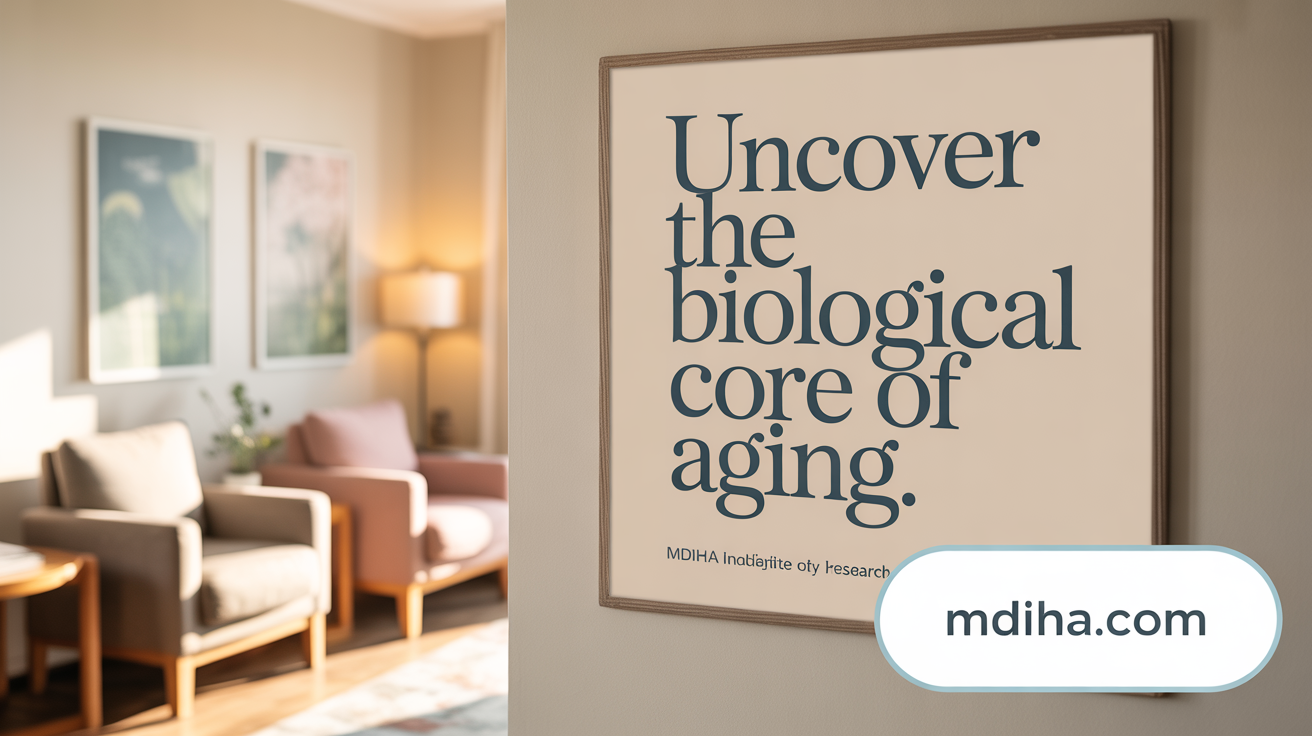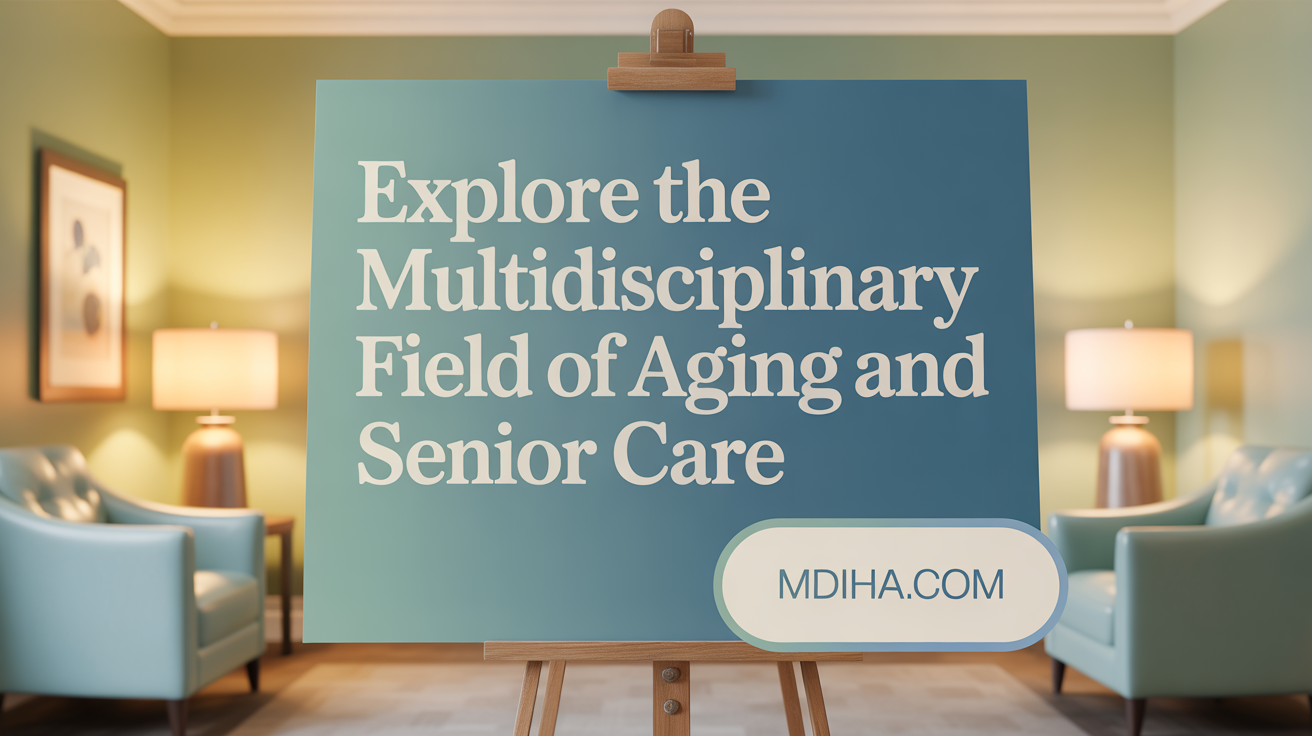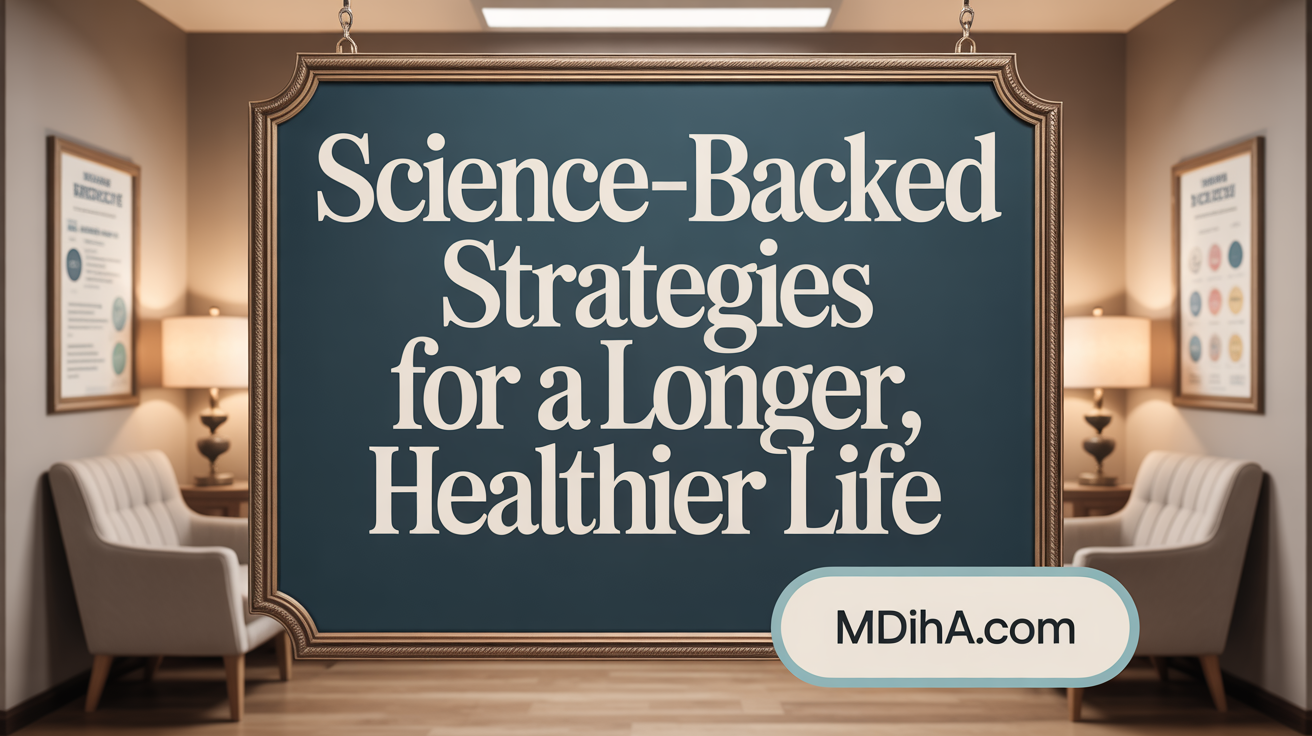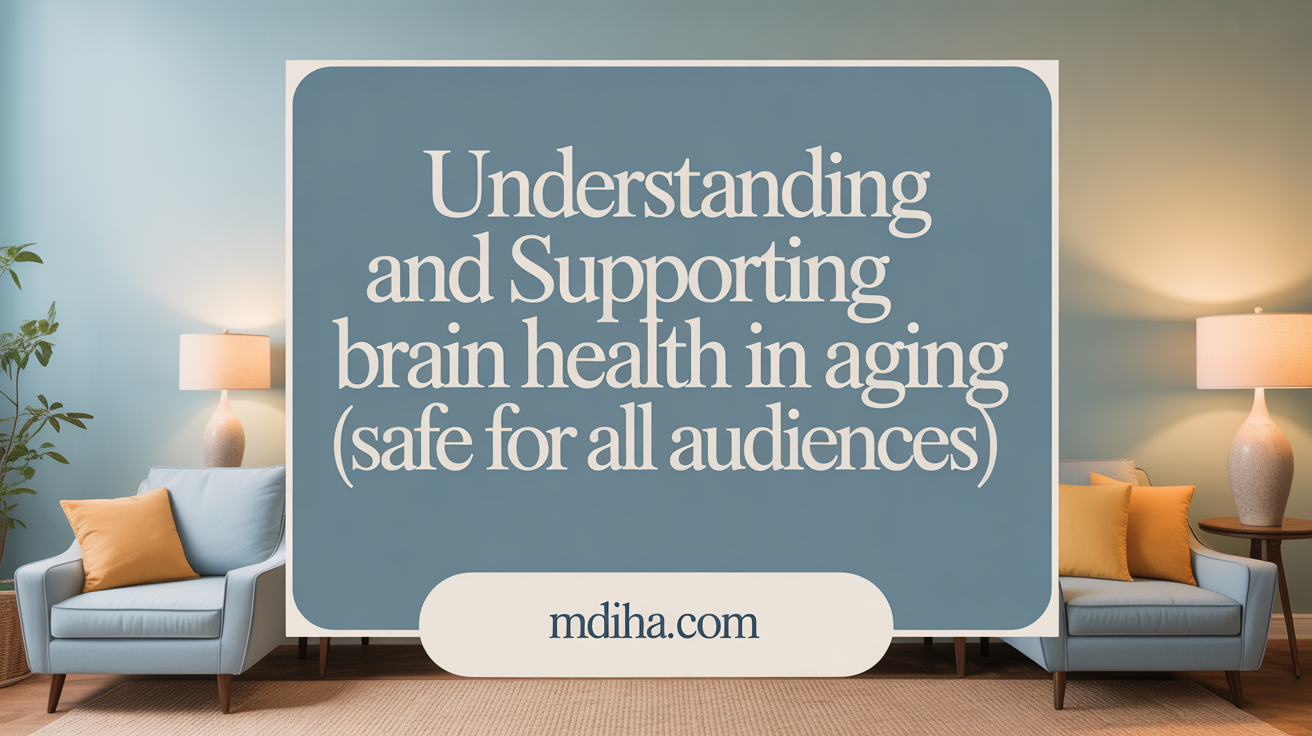Understanding Valengerontology and the Path to Healthy Aging
This article explores the multifaceted science of valengerontology—a comprehensive approach to studying aging—and healthy aging. We delve into key biological, psychological, social, and environmental aspects of aging, illuminate scientific models and theories, and highlight evidence-based strategies for promoting longevity and quality of life as people age. Drawing on decades of research, interdisciplinary frameworks, and cutting-edge methodologies, we provide a holistic view of how aging occurs and how it can be managed optimally.
Defining Healthy Aging: A Multidimensional Approach
What is healthy aging and how is it defined?
Healthy aging is a comprehensive and ongoing process focused on developing and maintaining the ability to live well, independently, and participate actively in society as individuals grow older. It emphasizes more than just the absence of disease or disability; instead, it involves preserving physical, mental, and social capacities that enable a fulfilling life.
This approach recognizes that aging is inherently complex and multifaceted. It encourages adopting a broad perspective that includes creating supportive environments and engaging in healthy lifestyle behaviors throughout life. For example, regular physical activity, good nutrition, mental stimulation, and social engagement are all vital components that contribute to healthier aging.
Importantly, individuals with chronic health conditions or disabilities can still experience healthy aging if they effectively manage their conditions and sustain their functional abilities. This holistic view respects the diversity of aging experiences and promotes strategies that align individual capabilities with environmental supports.
The concept of healthy aging encompasses physical well-being, mental resilience, social connectedness, and emotional stability. Models generally describe how intrinsic factors—such as genetics and personal health—and extrinsic factors—like social support and physical environment—interact over the life course. Consequently, healthy aging involves proactive health promotion, adaptation, and empowerment to ensure older adults can maintain independence, contribute meaningfully, and enjoy a good quality of life.
In summary, healthy aging is a dynamic, multidimensional process that involves maintaining the best possible functional capacity through a combination of individual efforts and supportive societal structures. It underscores the importance of a supportive environment and healthy habits adopted early and sustained across the lifespan to foster resilience, growth, and well-being in later years.
More about this topic can be explored through searches for "definition and models of healthy aging."
Why Healthy Aging Matters: Individual and Societal Impacts
Why is healthy aging important?
Healthy aging plays a vital role in helping individuals preserve their physical, mental, and social well-being as they grow older. This holistic approach ensures a better quality of life, allowing older adults to remain active, engaged, and independent.
Engaging in healthy habits such as regular exercise, a nutritious diet, adequate sleep, and avoiding harmful substances like tobacco and excessive alcohol can significantly lower the risk of chronic diseases such as heart disease, diabetes, and cognitive decline. These lifestyle choices also support maintaining mobility and mental sharpness.
Beyond individual benefits, promoting healthy aging is essential for society. It helps older adults continue to contribute to their families and communities, fostering social cohesion and economic stability. Addressing health disparities early and creating age-friendly environments are critical steps in encouraging well-being throughout the lifespan.
Overall, fostering healthy aging enhances personal vitality and resilience, reinforcing societal strength and ensuring that older populations can live fulfilling and productive lives.
The 7 Pillars of Aging: Biological Foundations of the Aging Process

What are the 7 pillars of aging?
The 7 pillars of aging serve as a comprehensive framework created by the Trans-NIH Geroscience Interest Group. They aim to explain the fundamental biological processes that drive aging and contribute to age-related diseases.
These pillars include:
- Adaptation to stress
- Epigenetics
- Inflammation
- Macromolecular damage
- Metabolism
- Proteostasis
- Stem cells and regeneration
Each pillar represents a critical biological system or process that influences how the body ages. These processes are highly interconnected, meaning that changes in one can affect others, creating a cascade that accelerates aging and functional decline.
Understanding these core processes allows researchers to develop targeted interventions to improve healthspan. By influencing these pillars, it may be possible to delay the onset of chronic diseases and disabilities common in older adults.
For example, promoting cellular resilience to stress, maintaining proper epigenetic regulation, reducing chronic inflammation, repairing macromolecular damage, optimizing metabolism, ensuring protein stability, and supporting stem cell function are all strategies that could potentially slow aging.
This framework guides ongoing scientific research, helping to uncover mechanisms underlying aging and identify promising targets for therapies aimed at extending healthy lifespan.
In summary, the 7 pillars highlight that aging is not caused by a single factor but results from multiple, interacting biological processes. Interventions focusing on these areas are crucial in the quest to improve aging outcomes.
More about biological pillars of aging and geroscience
For in-depth information, a search with the query 'biological pillars of aging and geroscience' can lead to further scientific articles, reviews, and ongoing research studies that explore these interconnected processes in detail.
The Science Behind Biological Aging: Cellular and Molecular Insights
What is the science behind biological aging?
Biological aging is fundamentally driven by the gradual accumulation of damage at the cellular and molecular levels. This damage affects various components within cells, leading to a decline in their function and, consequently, the deterioration of tissues and organs.
One of the primary mechanisms is DNA damage and mutations. Over time, errors in DNA replication and exposure to oxidative stress cause mutations and genomic instability. These impairments can hinder cell division and repair, contributing to tissue decline.
Telomere attrition is another crucial factor. Telomeres, the protective ends of chromosomes, shorten with each cell division. When they become critically short, cells enter a state called cellular senescence—a permanent halt in division—which reduces tissue regenerative capacity.
Mitochondrial dysfunction also plays a significant role. Mitochondria are the cell's powerhouses, generating energy through oxidative phosphorylation. Damage to mitochondrial DNA and proteins leads to decreased energy production and increased production of harmful free radicals, worsening cellular damage.
Protein misfolding and aggregation contribute to aging by impairing cell functions. Normally, cells maintain proteostasis—balance in protein production and cleanup—but with age, misfolded proteins accumulate, interfering with cellular processes and leading to neurodegenerative diseases.
Cellular senescence not only results from DNA damage but also involves changes in gene expression and inflammatory signaling. Senescent cells secrete inflammatory factors, creating a pro-aging environment that damages nearby cells.
Epigenetic changes, such as DNA methylation and histone modifications, alter gene expression without changing the underlying DNA sequence. These modifications can disrupt normal cellular functions and are associated with biological age, as measured by epigenetic clocks.
From an evolutionary perspective, theories of aging suggest that natural selection weakens with age after reproductive years. This allows the accumulation of harmful mutations—known as mutation accumulation theory—and a decline in maintenance of biological functions, leading to aging.
In essence, aging results from a complex interplay of accumulated molecular insults, diminished repair mechanisms, and systemic biological changes. These processes collectively cause the physiological decline characteristic of aging, influencing overall health and lifespan.
| Mechanism | Effect on Cells | Related Processes |
|---|---|---|
| DNA damage and mutations | Genomic instability, cell malfunction | Cancer risk, organ decline |
| Telomere shortening | Cell cycle arrest, senescence | Reduced tissue renewal |
| Mitochondrial dysfunction | Reduced energy, increased oxidative stress | Neurodegeneration, fatigue |
| Protein misfolding | Loss of proteostasis, toxic aggregates | Neurodegenerative diseases |
| Cellular senescence | Inflammatory environment | Aging tissues, impaired repair |
| Epigenetic changes | Altered gene expression | Loss of cellular identity, age clocks |
This understanding stems from extensive research using model organisms like yeast, worms, and mice, providing insights into the genetic and molecular pathways that influence aging across species.
Research Methodologies and Biomarkers in Aging Science
What research methodologies and biomarkers are used to study aging?
Scientific investigation into the aging process relies on a diverse set of research methods and biomarkers to uncover the biological, psychological, and social aspects of aging.
One fundamental approach is longitudinal studies, which involve tracking the same individuals over extended periods. These assessments help researchers understand how various factors evolve and influence aging trajectories. Clinical trials are also crucial, as they evaluate the effectiveness of interventions designed to slow or alter the aging process.
Advancements in technology have enabled high-throughput 'omics' techniques—such as genomics, proteomics, and metabolomics—that provide comprehensive insights into molecular changes associated with aging. These technologies allow scientists to analyze vast amounts of biological data at the cellular and systemic levels.
Imaging techniques like positron emission tomography (PET) and magnetic resonance imaging (MRI) are invaluable for non-invasively studying physiological alterations. They help visualize brain structures, assess neurodegeneration, and monitor age-related anatomical changes.
Bioinformatics plays a critical role, employing tools such as genome-wide association studies (GWAS), machine learning algorithms, and deep neural networks. These approaches facilitate the identification and validation of aging biomarkers by analyzing complex datasets for patterns linked to biological aging.
Key biomarkers include epigenetic clocks based on DNA methylation patterns—such as GrimAge and Horvath's clock—that provide estimates of biological age. Telomere length measurement is another vital biomarker, reflecting cellular aging, with shorter telomeres associated with increased age-related health risks.
Additional markers like telomerase activity and plasma proteins are used to assess physiological aging and predict health outcomes. These biomarkers are evaluated through laboratory techniques such as bisulfite sequencing for methylation, quantitative PCR for telomeres, and proteomic assays.
Emerging methods involve integrating these various data streams through multi-omics approaches and artificial intelligence (AI) analyses, offering a holistic understanding of aging. Such innovations are paving the way for personalized interventions aimed at improving healthspan and lifespan.
In summary, modern aging research combines longitudinal follow-ups, molecular profiling, imaging, and computational modeling, with biomarkers like DNA methylation clocks, telomere measurements, and plasma proteins providing vital insights into biological age and disease risk.
Holistic Frameworks Underpinning Healthy Aging and Age Management
What scientific theories and conceptual frameworks underpin age management and healthy aging initiatives?
Understanding healthy aging involves several scientific theories and models. One of the most influential is the successful aging model proposed by Rowe and Kahn. This model emphasizes maintaining high levels of physical, cognitive, and social functioning while avoiding disease and disability. It promotes a view of aging that focuses on resilience, vitality, and continued participation in life.
Biological foundations also support age management strategies. The "7 pillars of aging"—including molecular damage, telomere attrition, mitochondrial dysfunction, and epigenetic clocks—highlight the complex biological mechanisms underlying aging. These insights guide interventions aimed at cellular health and longevity.
Complementing biological models are perspectives from the life course theory. This approach stresses that aging is shaped by lifelong social, economic, and relational factors. Early life experiences, educational opportunities, social inequalities, and structural influences significantly impact health outcomes in later years. It counters the notion that aging outcomes are solely determined by late-life behaviors.
The multidimensional concept of healthy aging further informs initiatives. It considers physical health, cognitive vitality, emotional well-being, and social engagement as interconnected domains. Research indicates that predictors such as social support, mental stimulation, and psychological resilience contribute to positive aging outcomes.
Integrative approaches bridge biological and social perspectives. They promote strategies that combine health promotion, disease prevention, and social participation. These frameworks support personalized and culturally sensitive interventions, emphasizing that aging is a complex, adaptable process rather than a decline to be solely managed.
In summary, these theories and models advocate for a holistic view of aging, emphasizing healthspan—not just lifespan—through biologically informed, socially aware, and lifelong strategies. This comprehensive perspective is essential for developing effective policies and practices that embrace the diversity and potential of aging populations.
Valengerontology: Integrating Gerontological Sciences

What is the definition and scope of gerontology?
Gerontology is the comprehensive study of the aging process across the lifespan. It examines the biological, psychological, social, cultural, and environmental changes that occur as individuals age. The goal of gerontology is to understand how these various factors influence aging and to develop strategies that improve quality of life for older populations. This multidisciplinary field integrates research from biology, sociology, psychology, policy, and health sciences to explore aging holistically.
How does gerontology differ from geriatrics?
While gerontology covers the broad scientific study of aging, geriatrics is a specialty focused specifically on medical treatment of diseases and health issues in older adults. Geriatric medicine aims to diagnose, treat, and manage age-related conditions, often working within healthcare systems to improve health outcomes. In contrast, gerontology includes social, psychological, and biological aspects, aiming at understanding aging as a natural process and promoting healthy aging.
What are the main subfields of gerontology?
Gerontology is subdivided into several focused areas:
- Biogerontology: Studies the biological mechanisms of aging, including cellular and molecular changes, with aims to prevent age-related diseases and extend healthy lifespan.
- Social Gerontology: Examines aging within societal contexts, analyzing social roles, policies, and relationships. It seeks to improve social conditions and support systems for older adults.
- Environmental Gerontology: Looks at how physical and social environments influence aging. It advocates for age-friendly settings that promote independence and well-being.
Why is gerontology considered a multidisciplinary science?
Gerontology’s complexity stems from its integration of multiple disciplines. It combines biological sciences to understand cellular aging, psychology to assess mental health and cognition, sociology for societal impacts, nursing and medicine for health management, as well as policy and arts for societal responses. This broad approach enables comprehensive strategies to address aging challenges and optimize healthspan.
What are the historical roots of gerontology?
The term “gerontology” was coined by Élie Metchnikoff in 1903, originating from Greek roots meaning
Biological, Psychological, and Social Aspects of Aging
Aging is a multidimensional process that encompasses significant biological, psychological, and social changes.
Biologically, aging involves the gradual decline of various organ systems. Cellular damage accumulates over time, including errors in DNA replication, mitochondrial mutations, and oxidative stress caused by free radicals. These changes contribute to tissue atrophy and organ dysfunction, which can lead to age-related diseases such as cardiovascular issues, respiratory problems, and neurodegenerative conditions like Alzheimer’s disease. Scientific research using model organisms has supported these biological mechanisms, emphasizing the cellular and molecular basis of aging.
Psychologically, aging impacts mental processes and emotional well-being. Common cognitive changes include slowing in processing speed, difficulties in attention and multitasking, and challenges with memory recall, especially in tasks involving recent events. However, some cognitive skills, like vocabulary and verbal reasoning, tend to remain stable or improve. Emotionally, older adults often develop greater resilience and emotional intelligence, managing stress more effectively and using strategies such as cognitive reappraisal. They tend to prioritize meaningful relationships and experiences, which enhances psychological health.
Social aspects involve changes in roles, relationships, and cultural perceptions of aging. Older adults may experience shifts in social roles—from active workers to retirees—and face challenges such as social isolation or loneliness. However, engaging in community activities and maintaining social connections have been shown to support mental and physical health. Cultural attitudes towards aging influence how older individuals perceive themselves and their value in society, affecting overall well-being.
The interactions among these dimensions are dynamic. Biological changes can influence psychological health, as neurodegeneration might affect mood and mental sharpness. Conversely, psychological resilience can positively impact biological aging, by reducing stress and inflammation. Social engagement can promote cognitive vitality, while social isolation may accelerate health decline.
Understanding how these aspects interplay is crucial for promoting healthy aging. Interdisciplinary approaches aim to address all these facets to improve quality of life, support independence, and foster a positive perception of aging. By integrating biological, psychological, and social strategies, tailored interventions can be developed to enhance healthspan and well-being across the lifespan.
Lifestyle and Interventions That Promote Healthy Aging and Longevity

What are research-based strategies and practices to promote healthy aging and longevity?
Promoting healthy aging involves a comprehensive approach that targets various aspects of physical, mental, and social health. Scientific studies show that lifestyle modifications can significantly influence lifespan and quality of life.
One of the most effective strategies is maintaining an active lifestyle. Regular physical activity, which includes walking, strength training, balance exercises like tai chi, and flexibility routines such as yoga, helps preserve muscle mass, enhance mobility, and reduce the risk of chronic diseases.
Dietary patterns also play a crucial role. Diets rich in nutrients, such as the Mediterranean diet, DASH (Dietary Approaches to Stop Hypertension), and MIND diet, have been linked to lower risks of heart disease, cognitive decline, and other age-related health issues. These diets emphasize fruits, vegetables, lean proteins, whole grains, nuts, and healthy fats.
Getting enough sleep is essential for maintaining cognitive health, emotional regulation, and overall vitality. Aim for 7-9 hours of quality sleep per night to support memory and reduce mental health risks like depression.
Managing stress through techniques such as yoga, meditation, mindfulness, or journaling can improve emotional resilience and lower cortisol levels, which are linked to aging processes.
Staying socially engaged through activities like volunteering, participating in community events, maintaining close family ties, and pursuing hobbies fosters mental stimulation and emotional wellbeing.
Avoiding harmful substances, including quitting smoking and limiting alcohol intake, reduces risk factors for many age-related diseases. Good hygiene practices and protection during sexual activity are also important to prevent infections and other health issues.
Preventive healthcare measures, such as regular health screenings, immunizations, medication management, and early detection of conditions, can help manage emerging health problems before they develop into severe issues.
Incorporating these science-backed strategies consistently can delay the onset of chronic diseases, improve physical and mental function, and support a longer, healthier life.
Overall, embracing a lifestyle centered around balanced nutrition, physical activity, mental engagement, and medical preventive care is fundamental to fostering vibrant aging as supported by ongoing research.
Sleep: The Cornerstone Habit of Healthy Aging

What is the #1 best habit for healthy aging?
One of the most vital habits for aging well is ensuring adequate quality sleep. Older adults are recommended to aim for at least seven hours of sleep each night. Good sleep is essential for many aspects of health, supporting metabolism, cognitive function, and emotional well-being.
Quality sleep helps the brain undergo crucial repair processes, consolidates memory, and maintains mood stability. It also plays a significant role in reducing risks related to aging, including cognitive decline, dementia, and depression.
Research consistently highlights sleep as a fundamental pillar of health that influences overall longevity and life quality. Poor sleep patterns are linked to increased inflammation, metabolic disturbances, and weakened immune responses.
Why is sufficient and quality sleep important?
Sufficient sleep, especially in older adults, is associated with better memory, improved mood, and resilience against mental health disorders. Studies show that even mild sleep deprivation can impair cognitive performance and elevate stress levels.
Moreover, quality sleep helps regulate hormones related to appetite, influencing weight management and metabolic health. It also allows the body to clear toxins and repair tissues, supporting overall physical health.
Effects on memory and mood
Getting enough restorative sleep enhances memory retention, learning, and emotional regulation. Sleep disturbances may cause mood swings, irritability, and increase vulnerability to mental health conditions such as depression and anxiety.
Older adults who prioritize good sleep report a greater sense of well-being and better cognitive functioning. Conversely, sleep problems are common in aging and should be addressed early to prevent subsequent health issues.
Disease risk reduction including dementia and depression
Consistent, quality sleep is connected to a lower risk of developing neurodegenerative diseases like Alzheimer’s. Sleep helps clear amyloid plaques from the brain, reducing Alzheimer’s pathology.
Additionally, good sleep habits are associated with decreased incidence of depression, which can be both a cause and consequence of poor sleep. Maintaining sleep hygiene habits can serve as a preventive measure against these serious conditions.
In summary, adopting healthy sleep routines is one of the most accessible and impactful strategies to promote longevity, mental health, and quality of life as one ages.
Age-Related Cognitive Changes and Brain Health

How does normal cognitive aging differ from dementia?
Normal cognitive aging involves subtle changes in thinking speed, attention, multitasking, and word-finding, with most individuals maintaining their independence. These changes tend to peak around age 30 and do not impair daily functioning. In contrast, dementia involves more severe decline, impacting memory, reasoning, and daily activities. Conditions like Alzheimer's disease, vascular issues, and other neurodegenerative disorders are common causes of dementia.
What structural changes occur in the brain as we age?
Research has shown that aging is associated with reductions in the volume of key brain areas, including the hippocampus, frontal lobes, and temporal lobes. These regions are crucial for memory, decision-making, and language. While some decline is typical, not all cognitive functions deteriorate. Vocabulary and verbal reasoning often remain stable or even improve, reflecting the complexity of brain aging.
How do cognitive reserve and resilience influence aging?
Cognitive reserve refers to the brain's ability to compensate for damage through efficient neural networks or alternative pathways. Engaging in lifelong learning, social activities, and mentally stimulating tasks can strengthen this reserve. Older adults with greater resilience tend to experience fewer cognitive symptoms despite brain changes, emphasizing the importance of mental engagement and a positive mindset.
What are the main risk factors for Alzheimer’s disease?
Modifiable risk factors account for about 50% of cases and include type 2 diabetes, high blood pressure, obesity in midlife, smoking, depression, and physical inactivity. Maintaining cardiovascular health and managing these conditions can lower the risk. Genetic factors also play a role, but lifestyle choices remain critically important for prevention.
What strategies can support brain health during aging?
Healthy behaviors such as a balanced diet (like the Mediterranean diet), regular physical activity, adequate sleep (7-9 hours), social engagement, and mental exercises can promote brain health. Stimulating activities like learning new skills, exploring new environments, and engaging in hobbies help maintain cognitive function. Clinical studies are ongoing to refine these strategies and validate their effectiveness.
| Aspect | Influence on Brain Health | Supporting Actions |
|---|---|---|
| Diet | Supports vascular and neural health | Mediterranean, DASH, MIND diets |
| Exercise | Enhances blood flow and neurogenesis | Aerobic, strength, balance exercises |
| Sleep | Memory consolidation and toxin removal | Regular sleep schedule, sleep hygiene |
| Social Engagement | Cognitive and emotional resilience | Volunteer work, community involvement |
| Mental Activities | Cognitive reserve and plasticity | Learning, puzzles, hobbies |
Continuing research aims to develop personalized interventions to prolong cognitive health and reduce the impact of neurodegenerative diseases, ultimately contributing to healthier aging outcomes.
Positive Aging: Mindset, Resilience, and Wellbeing
How do attitudes and beliefs influence the aging experience?
A positive outlook on aging can significantly impact overall health and quality of life. Individuals who view aging as a natural, manageable process tend to cope better with physical and emotional challenges. Research indicates that a belief in personal control over aging correlates with longer lifespan and better mental health. Conversely, negative stereotypes about aging can lead to poorer health outcomes and reduced life satisfaction.
What is the role of emotional intelligence and stress management?
As people age, many develop greater emotional resilience. Older adults often exhibit enhanced emotional intelligence, which helps them manage stress more effectively. Strategies such as reappraisal—reinterpreting situations to alter emotional reactions—become more common with age. These skills contribute to lower cortisol levels and better cardiovascular health, supporting overall well-being.
How do social and spiritual dimensions contribute to positive aging?
Maintaining social connections and engaging in spiritual practices are central to a fulfilling aging journey. Social activities like volunteering and community involvement bolster mental health, cognitive function, and emotional stability. Spiritual growth, whether through faith, meditation, or purpose-driven pursuits, offers a sense of meaning and peace, which are vital aspects of wellbeing.
What are the pillars and concepts supporting positive aging?
Six primary pillars underpin a positive aging experience:
| Pillar | Focus Area | Benefits |
|---|---|---|
| Healthy Lifestyle | Nutrition & Exercise | Enhances physical capacity and reduces disease risk |
| Cognitive Engagement | Learning & Hobbies | Maintains mental sharpness and wisdom |
| Social Connections | Relationships & Community | Supports emotional health and reduces loneliness |
| Mindfulness & Emotional Wellbeing | Stress Reduction | Improves mood and resilience |
| Spiritual Growth | Purpose & Faith | Fosters peace, hope, and acceptance |
| Financial Security | Economic Stability | Provides peace of mind and independence |
Focusing on these domains encourages a holistic approach, emphasizing strengths, growth, and adaptation. Embracing a mindset of growth and resilience supports older adults in living with purpose, joy, and dignity, making aging not just a biological process but a vibrant phase of life.
Cutting-Edge Research and Clinical Advances in Aging Science
Recent advancements in the science of aging are driven by prominent research institutions such as the National Institute on Aging (NIA), the Center for Healthy Aging Research at Oregon State University, and the Human Longevity Lab at Northwestern University Feinberg School of Medicine. These centers focus on understanding the biological, psychological, and social factors influencing healthy aging, aiming to extend not just lifespan but healthspan — the period of life spent free of chronic disease.
Clinical trials exploring lifestyle interventions have demonstrated promising results. For example, regular physical activity, such as walking more than 8,000 steps daily, has been linked to a 51% reduction in all-cause mortality risk. Dietary patterns like the Mediterranean, DASH, and MIND diets—rich in fruits, vegetables, nuts, and fish—are associated with reduced risks of cardiovascular diseases and cognitive decline. Additionally, quitting smoking, managing stress, and ensuring sufficient sleep (7-9 hours) are foundational strategies supported by scientific evidence to promote healthy aging.
Innovative tools like the GrimAge test utilize DNA methylation patterns to estimate biological age. This epigenetic clock offers a reliable biomarker for health span and lifespan prediction. Studies reveal that lifestyle choices such as maintaining a healthy weight, eating vegetables, and avoiding smoking can positively influence methylation age, indicating a slower biological aging process.
Genetic and molecular aging research in model organisms like yeast, C. elegans, and mice continues to unravel the mechanisms underlying aging. Scientists identify genetic variants that extend lifespan and explore ways to mimic these effects in humans. Ongoing studies aim to develop targeted interventions that can slow or potentially reverse some aspects of biological aging.
Overall, these scientific pursuits—supported by robust research and clinical trials—are transforming our understanding of aging. They open possibilities for new therapies and lifestyle strategies designed to enhance quality of life well into old age, aligning with global efforts to address the demographic shifts toward aging populations.
Towards a Science-Based Future for Healthy Aging
The science behind valengerontology and healthy aging reveals a rich tapestry of interconnected biological, psychological, and social processes that influence how we age. As research advances, integrating conceptual frameworks, biomarkers, and lifestyle interventions offers new pathways to extend healthspan and enhance quality of life. Embracing a multidimensional, holistic vision—grounded in evidence and supported by international collaboration—empowers individuals and societies to adapt to the realities of aging with resilience and purpose. Continued investment in research and public health initiatives will be essential in unlocking the full potential of healthy aging for generations to come.
References
- Concepts and definitions of healthy ageing: a systematic review and ...
- 60 years of healthy aging: On definitions, biomarkers, scores and ...
- What Do We Know About Healthy Aging?
- Positive Aging: Redefining What Aging Successfully Means
- Gerontology - Wikipedia
- The Practice of Gerontology: What Is It? - WebMD
- Live long, be well: Science-based tips for healthy aging
- Ageing - Wikipedia
- Healthy Aging | Memory and Aging Center - UCSF
- Aging isn't just about decline. Here's how health improves as we ...
